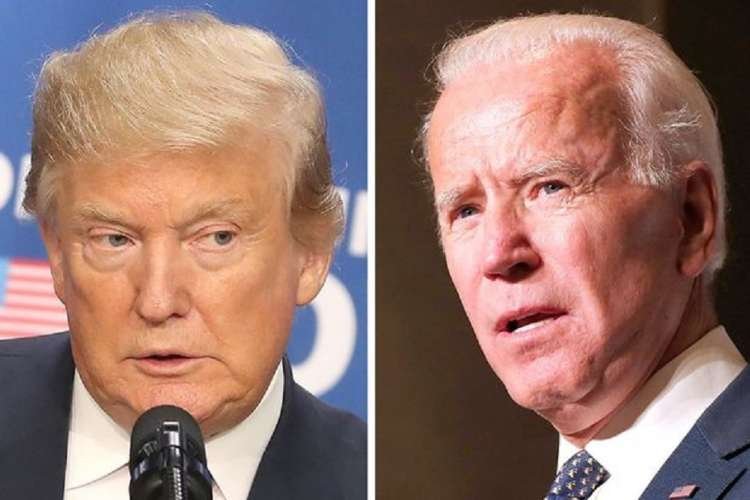Voters in the United States (US) will decide on November 3 whether Donald Trump remains in the White House for another four years.
The Republican president is being challenged by Democratic Party nominee Joe Biden, who is best known as Barack Obama’s vice-president but has been in US politics since the 1970s.
As election day approaches, polling companies will be trying to gauge the mood of the nation by asking voters which candidate they prefer.
Biden is currently leading Trump in the national polls. The 10-poll average indicates that just over half of Americans intend to back Biden while Trump’s support trails this by around seven or eight points.
BUT WHO WILL WIN?
Trump triumphed in 2016 despite losing the popular vote, and pollsters misjudged the size of his support, so despite Biden’s lead, it is still difficult to predict who will win the keys to the White House.
However, according to the latest polling averages, Biden’s lead over the incumbent is remaining solid despite a slight downfall in the wake of the US presidential debates and Trump’s diagnosis with coronavirus, The Telegraph reports.
Biden’s polling average has remained above 50 per cent since October 4, and the Democratic nominee has consistently polled in the lead since the race began.
If state polls are close to the final result, it suggests Biden is on course for gains in at least two swing states — Michigan and Wisconsin — and Arizona, which has been more likely to vote Republican in recent years.
WHAT ELSE YOU NEED TO KNOW:
In American politics, the term swing state refers to any state that could reasonably be won by either the Democratic or Republican presidential candidate by a swing in votes. These states are usually targeted by both major-party campaigns, especially in competitive elections.
While Florida and Texas are too close to call — carrying 67 electoral college votes between them — Pennsylvania and its 20 votes for the presidency are leaning Democrat according to the latest polls.
The electoral college is a process and not an actual place. To become president, what really counts is winning a majority of electoral votes. Each state has been allotted electoral votes based on the size of its population and whoever wins a particular state is expected to bag all the electoral votes allotted to that state.
There are 538 electoral votes in total which means that a candidate needs to secure 270 to win.
To put it simply, when the US public votes in the election, they are not voting for the president. Instead, they are voting for a group of people who will then choose the president and vice president.
The word “college” here simply refers to a group of people with a shared task, BBC says. The electoral college meets every four years, a few weeks after election day, to carry out that task.
Of the states that could go either way based on the latest polls, Iowa, Ohio, Pennsylvania and Florida all flipped to Donald Trump from the Democrats in the 2016 election, and his chances of retaining the presidency could rest on reclaiming victory here and holding on to Texas.
Having voted Republican in every election since 2000, Texas is now a toss-up and could be pivotal to the final result.
